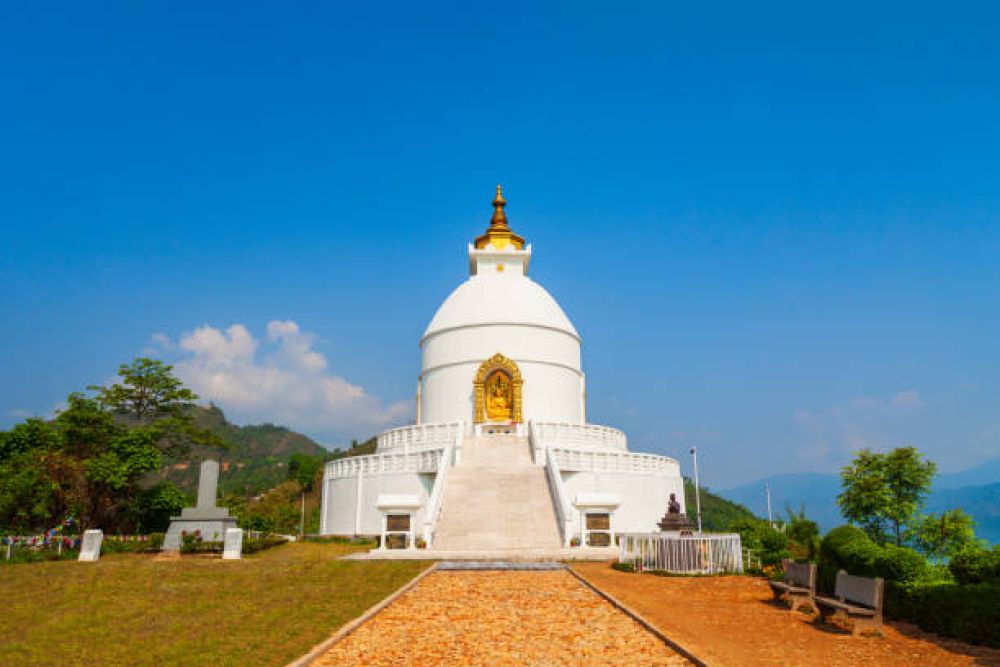

Pokhara Shanti Stupa, also known as the World Peace Pagoda, stands as a beacon of serenity and a symbol of peace on the Anadu Hill, overlooking the stunning Phewa Lake in Pokhara, Nepal. This impressive monument not only offers a tranquil space for visitors but also provides panoramic views of the majestic Annapurna range and the Pokhara city below.
The concept of constructing peace pagodas around the world was initiated by a Japanese Buddhist monk named Nichidatsu Fujii, the founder of the Nipponzan-Myohoji Buddhist Order. Moved by the devastation of the atomic bombs in Hiroshima and Nagasaki, he decided to spread the message of peace through these monuments. The foundation stone of the Shanti Stupa in Pokhara was laid in 1973, and after various challenges, the stupa was finally completed in 1992.
Tourism in Pokhara began to flourish in the 1950s with the exploration of the Annapurna Circuit. As trekking and mountaineering gained popularity, so did Pokhara as a starting point for many adventurers heading to the Himalayas. However, the Pokhara Shanti Stupa only started to draw international attention after its completion. Given the stupa's symbolism and the growth of cultural and spiritual tourism, Pokhara evolved from a trekkers' haven to a place that catered to a variety of tourists, ranging from those seeking tranquility to those interested in the local culture and nature.
Initially, access to the Shanti Stupa was only possible through a trek across the Phewa Lake and then climbing up the hill. Nowadays, it is also reachable by a road that winds through the lush forest. The easier access has boosted tourist visitation significantly, making it one of Pokhara's top destinations.
Tourists visiting the Pokhara Shanti Stupa can immerse themselves in the tranquil environment, take part in meditation sessions, or simply enjoy the breathtaking views. For those interested in architecture, the stupa itself presents a brilliant white structure capped with a golden spire in traditional Buddhist style, adorned with the four statues of Buddha representing important events related to the Buddha that occurred in the four cardinal directions.
Pokhara has been witnessing a trend towards sustainable and experiential tourism, with an emphasis on preserving the environment and engaging in local culture. Adventure activities like paragliding, zip-lining, and ultra-light flights offer unique ways to experience the grandeur of the landscape. Wellness and spiritual retreats that focus on yoga and meditation are becoming increasingly popular, leveraging the peaceful aura of the Shanti Stupa and surrounding areas.
Despite the influx of tourists, maintaining the pristine nature of the Shanti Stupa and the environment around it poses a challenge. Conservation efforts have become imperative to ensure that the spiritual and physical integrity of the stupa remains intact. Additionally, community-driven initiatives are under way to ensure that tourism benefits the local economy without compromising the site’s tranquility and significance.
In conclusion, the Pokhara Shanti Stupa continues to stand out as an iconic feature in Nepal’s tourism landscape, representing centuries-old Buddhist traditions while concurrently contributing to the modern travel experience. For any visitor to Nepal, a visit to this serene monument promises a profound and uplifting experience.